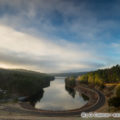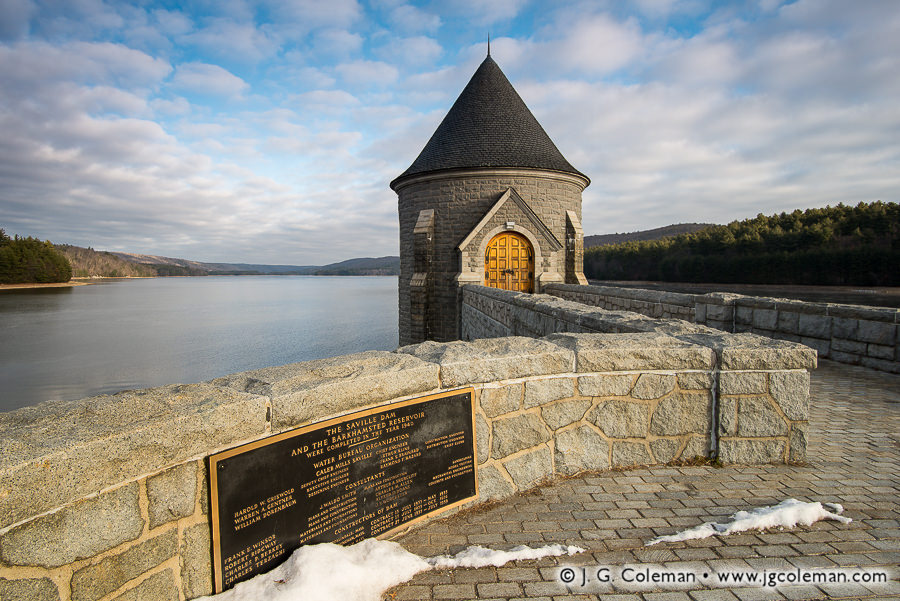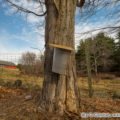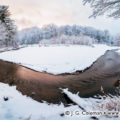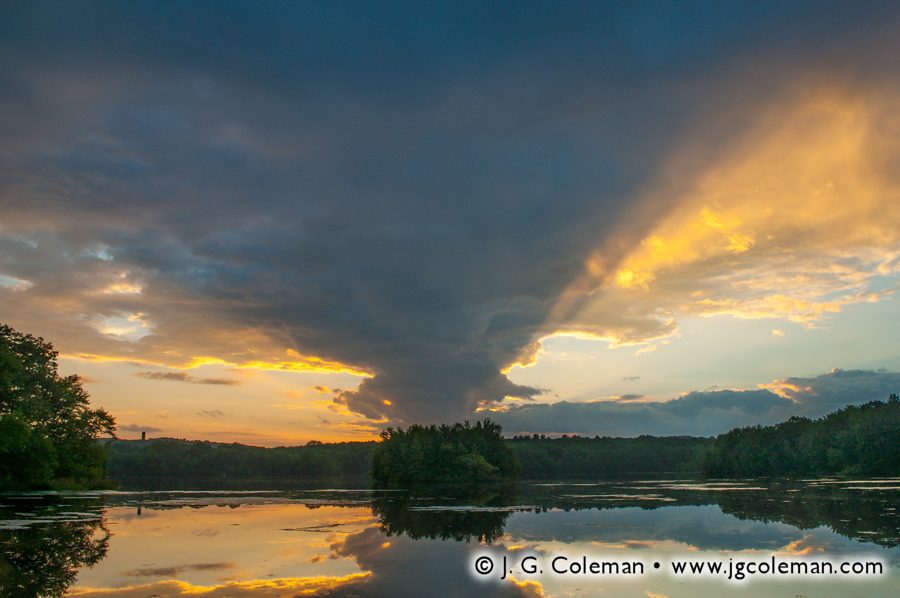
Scovill Reservoir, Wolcott, Connecticut
© 2013 J. G. Coleman
As someone who loves experiencing and photographing fresh, new landscapes, I spend plenty of time traveling all over Connecticut, even crossing the state line and heading elsewhere in the northeast whenever I get the chance. And yet, from the beginning, I’ve also placed a good deal of importance on seeing familiar landscapes with fresh eyes. I challenge myself to approach every landscape as if I’ve traveled a thousand miles to see it for the first time, even if I drive by it routinely or have conducted several photo shoots there in the past. In fact, my latest collection of fine art prints features Scovill Reservoir, a small lake near my home that really is part of my day-to-day life! I’m excited to introduce to you these new prints, for they are a celebration of just how beautiful, varied and surprising the familiar landscapes around home can be, just so long as we’re willing to see these things with fresh eyes.
Scovill Reservoir is a 120-acre lake nestled amongst the forest that lies right down the street from my house in Wolcott, Connecticut. How close by is it exactly? Well, suffice to say, I can walk to the nearest stretch of shoreline in just a few minutes or, alternatively, drive there in a matter of seconds. Anytime I leave home headed east, its shallow coves or densely-wooded shorelines are some of the first sights I pass after a few stop signs and a half-dozen neighborhood houses. Ever since my wife and I moved to Wolcott late last year, this small lake has been an ever-present part of our everyday lives.
Woodtick Majesty & Sunset Over Wolcott
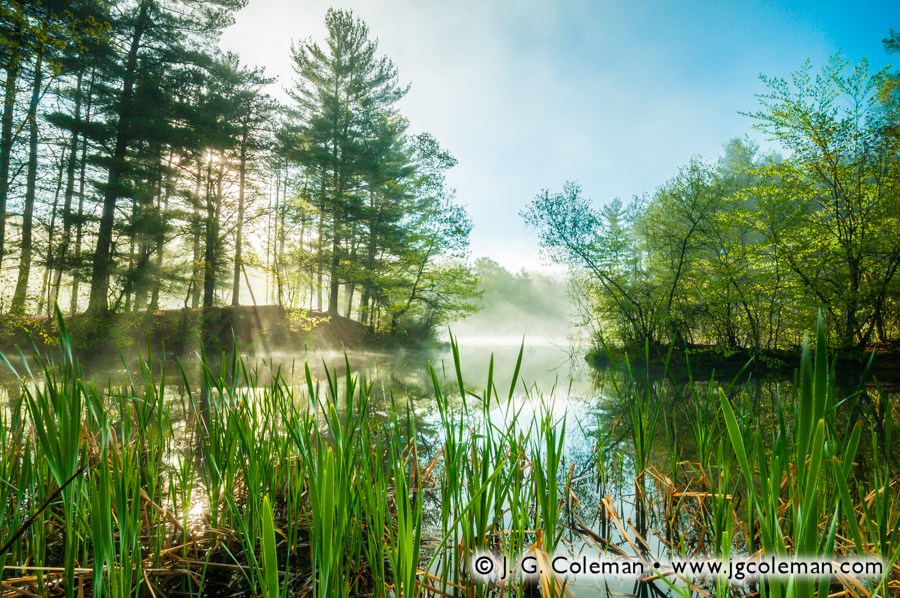
Scovill Reservoir, Wolcott, Connecticut
© 2013 J. G. Coleman
But the ordinary can sometimes prove surprisingly extraordinary; that was precisely the case when I headed to the northeastern shore of the lake on a misty Spring morning in May. I scrambled down the banks into a small pocket of wetlands and planted my tripod amongst the sedges, totally in awe of the dazzling light show materializing over the water. The scene possessed an almost incendiary beauty as the Sun rose over the horizon, piercing the evergreen canopy with heavenly beams of light that seared through the fog and cast a warm glow on the gently swaying reeds before me. My piece, “Woodtick Majesty” (photo above), was born of that remarkable morning and remains one of my most dramatic and luminous pieces from Scovill Reservoir.
“Sundown Over Wolcott” (photo at top) draws upon yet another moment in time during which nature conspired to produce a fleeting masterpiece. Having just slipped beneath the forested horizon, the sun boldy bid farewell with a radiant crescendo as it cast massive columns of light into the shadowy clouds above.
Although the lake is technically known as Woodtick Reservoir, it is almost universally referred to as Scovill or Scovill’s Reservoir. This nickname derived from the fact that the waters of the reservoir were, starting shortly before 1920, used in the production of brass by the highly influential Scovill Manufacturing Company. The Scovill name has remained attached to the lake ever since, even long after the company moved elsewhere. Eventually the unused reservoir, which had been slowly reclaimed by nature over the years, was sold to the Town of Wolcott in the 1980s.
Snowy Dusk on Scovill
If “Woodtick Majesty” features the reservoir in its most energetic light, then “Snowy Dusk on Scovill” (below) emphasizes the quieter, more subtle beauty of the lake on a serene evening during winter.
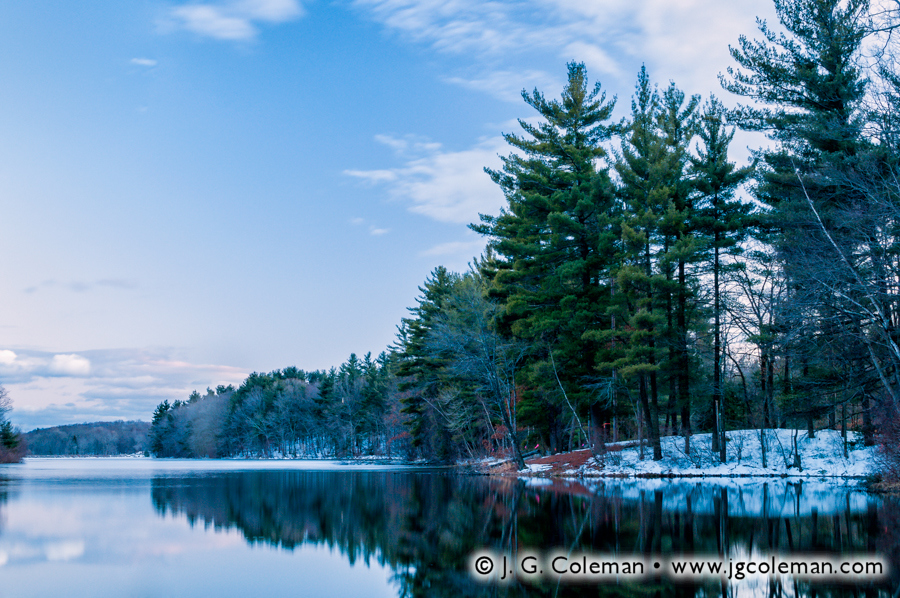
Scovill Reservoir, Wolcott, Connecticut
© 2013 J. G. Coleman
The cool colors of “Snowy Dusk” really impart a visual sense of the winter chill that was in the air on that frigid evening, even if the bluish tones actually resulted from the fact that the scene was only faintly illuminated by the blue sky of twilight. As we peer into this piece, we find a shadowy, snow-laden forest where evergreen pines and hemlocks are unmistakeable amidst the leafless branches of dormant oaks, maples and birches. Wispy clouds skate across the dimming sky, which is still just bright enough to cast reflections from the cold waters of the lake. In the distance, the broad, forested slopes of Tame Buck’s Hill rise gradually from the surrounding landscape south of the lake.
Tame Buck’s Hill was so named for an injured fawn which, probably at some point during the 19th-century, is said to have limped out of the woods beside the hill and strayed into the farmland of the Upson family. One can only imagine that the Upson children were thrilled about this and they took to nurturing the young animal like a pet until it was healed and capable of setting back off into the countryside. For years afterward, though, the deer reportedly made regular visits to the farm, having become somewhat domesticated as a result of its unusual upbringing. For the rest of its days, this “tame buck” must have been quite a beloved creature around town, for it remains immortalized in the name of the hill where it stumbled from the forest well over a century ago.
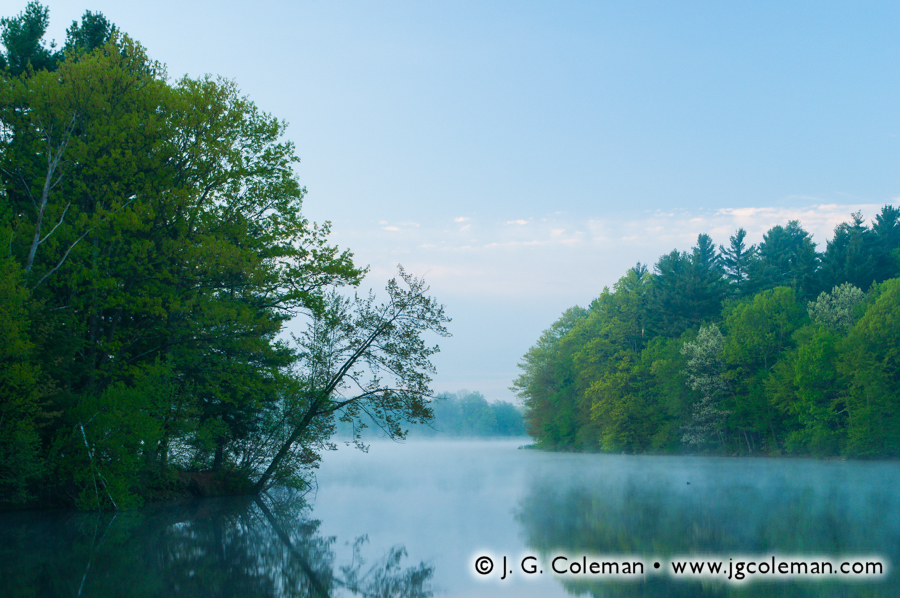
Scovill Reservoir, Wolcott, Connecticut
© 2013 J. G. Coleman
Woodtick Quietude
We’ve seen a couple different views of Scovill Reservoir already, from the warm, dazzling displays of dawn and sunset to the relaxed tones of dusk on a winter evening. “Woodtick Quietude” (above), however, draws us into an altogether different atmosphere of contemplation and tranquility. A light veil of mist has settled upon the still waters of the lake in the early hours before dawn, imparting an ethereal softness to the successive layers of dimly-lit woodlands. Peering into this meditative waterscape, our minds almost instinctively fill the visual space with a soothing silence.

Mad River, Peterson Park, Wolcott, Connecticut
© 2013 J. G. Coleman
Mad River’s Dominion
It’s sort of ironic that I’m presenting my piece, “Mad River’s Dominion” (above), as the final work in this new series, because the story of Scovill Reservoir didn’t even begin until the Mad River was dammed in central Wolcott shortly before 1920. Only then did Scovill Reservoir emerge as the Mad River flooded 120 acres of farmland and pastures that were purchased from Wolcott residents.
“Mad River’s Dominion” brings us about two miles north of the reservoir to the banks of the Mad River in Wolcott’s Peterson Park. Lively and energetic, the stream can be seen tumbling over submerged stones and dodging mossy boulders as it meanders through dense woodlands. There was a time when the full ten-mile course of the Mad River would’ve looked much like this, but these days only about two miles retain a truly wild and scenic character. After flowing south through Wolcott and into the neighboring city of Waterbury, the river becomes almost unrecognizable. It is funneled unceremoniously through densely populated areas for nearly five miles until being squeezed out into the Naugatuck River amidst the brick and asphalt surfaces of an industrial park. This hardly seems like a fitting end for such a handsome and vigorous woodland stream, but at least the Mad River can still lay claim to a proud dominion in the forests of northern Wolcott.
Interested in the Works You’ve Seen Here?
- To buy fine art prints or see larger versions of the works above, visit the Scovill Reservoir and Peterson Park collections at my online galleries.


